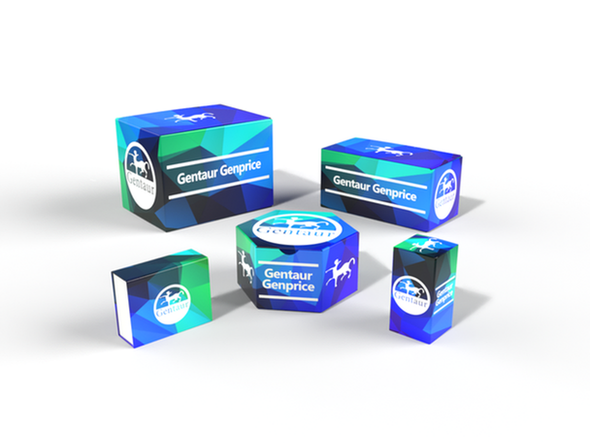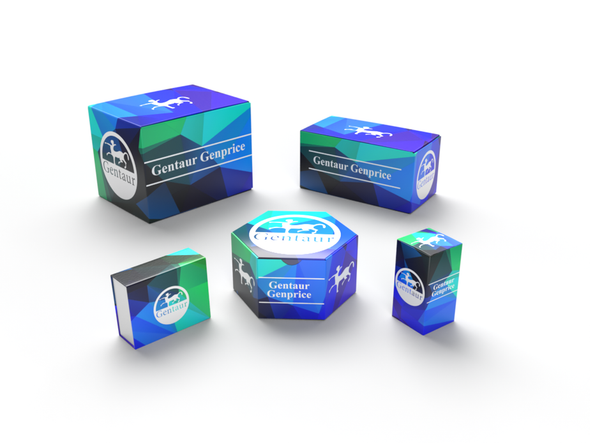Description
Grik4 Antibody | 4391 | Gentaur UK, US & Europe Distribution
Host: Rabbit
Reactivity: Human, Mouse, Rat
Homology: N/A
Immunogen: Grik4 antibody was raised against a 18 amino acid synthetic peptide near the carboxy terminus of the mouse Grik4.
The immunogen is located within the last 50 amino acids of Grik4.
Research Area: Neuroscience
Tested Application: E, WB, IHC-P, IF
Application: Grik4 antibody can be used for detection of Grik4 by Western blot at 0.5 - 2 μg/mL. Despite its predicted molecular weight, Grik4 often migrates at a lower molecular weight in SDS-PAGE. Antibody can also be used for immunohistochemistry starting at 2.5 μg/mL. For immunofluorescence start at 20 μg/mL.
Antibody validated: Western Blot in rat samples; Immunohistochemistry in human samples and Immunofluorescence in human samples. All other applications and species not yet tested.
Specificiy: N/A
Positive Control 1: Cat. No. 1463 - Rat Brain Tissue Lysate
Positive Control 2: Cat. No. 10-301 - Human Brain Tissue Slide
Positive Control 3: N/A
Positive Control 4: N/A
Positive Control 5: N/A
Positive Control 6: N/A
Molecular Weight: N/A
Validation: N/A
Isoform: N/A
Purification: Grik4 Antibody is affinity chromatography purified via peptide column.
Clonality: Polyclonal
Clone: N/A
Isotype: IgG
Conjugate: Unconjugated
Physical State: Liquid
Buffer: Grik4 Antibody is supplied in PBS containing 0.02% sodium azide.
Concentration: 1 mg/mL
Storage Condition: Grik4 antibody can be stored at 4˚C for three months and -20˚C, stable for up to one year. As with all antibodies care should be taken to avoid repeated freeze thaw cycles. Antibodies should not be exposed to prolonged high temperatures.
Alternate Name: Grik4 Antibody: KA1, EAA1, GRIK, GluK4, Glutamate receptor ionotropic, kainate 4, Excitatory amino acid receptor 1
User Note: Optimal dilutions for each application to be determined by the researcher.
BACKGROUND: Grik4 Antibody: Grik4 codes for the KA1 subunit of kainate-type ionotropic glutamate receptors which are critical regulators of network activity that act by modifying neuronal excitability, directly and indirectly, through GABAergic interneurons. Five subunits can assemble to form kainate receptors (KARs) : GluR5 (coded by Grik1) , GluR6 (coded by Grik2) , and GluR7 (coded by Grik3) are the low-affinity subunits, and KA1 and KA2 are the high-affinity subunits. In the adult brain, KARs are located pre- and postsynaptically on pyramidal cells and on interneurons. Kainate receptors on GABA-containing interneurons enhance GABA release and thereby downregulate glutamatergic signaling. KARs have been implicated in numerous psychiatric disorders. Case control studies show significant association of Grik4 with both schizophrenia and bipolar disorder.






